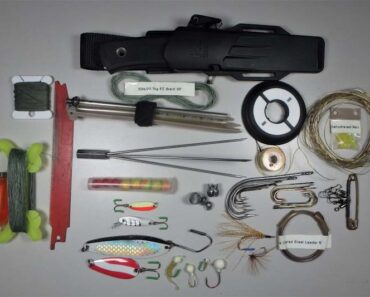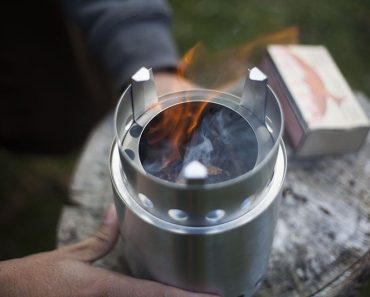Flour is the core ingredient in almost all baked goods, plus a useful ingredient for hundreds of other recipes and food items. It’s a staple product, which means it has a place in survival shelters, long-term storage closets, and the checklist for any true prepper.
But flour can and does go bad, especially if you don’t store it properly. Today, let’s break down how you can store flour long-term using a variety of methods. With the right setup, you can store flour for 10 years or even indefinitely.
How Does Flour Go Bad?
Like many other common foods and ingredients, flour can go bad for a variety of reasons. Some of the most common causes include:
- Oxidation, which happens when oxygen from the ambient air breaks down certain nutrients in common flour. Note that oxidation is more of an issue with whole grain flour, as the natural oils in whole grains become rancid when exposed to oxygen for too long.
- Mold formation, which happens if humidity or temperature levels rise enough that flour absorbs moisture. The flour then becomes the base for mold species that can grow in your container or a flour bag!
- Insect infestation. Moths, weevils, and other insects may infest your flour even if you store it in an airtight container. This most often occurs if the flour has insect eggs contained inside it when you purchase the bag/container.
Each of these potential issues can ruin your flour storage plan and cause you to have to buy more flour later down the road.
Can You Store Flour for “Long-Term” Periods?
Yes, although what constitutes “long-term” varies from person to person. Generally, the longer you plan to store any type of food, the more drastic preservation methods you have to use. It’s not that hard to keep flour fresh and usable for a few months. It’s a much harder effort to keep flour usable for several years or even over a decade.
That said, there are several methods you can employ depending on:
- Your current resources
- How long you want the flour to be good for
- Whether you think you’ll be able to purchase more flour when you use up your current stash
Airtight Container Storage
Firstly, you can try storing flour in airtight containers. Such a storage method will keep your flour fresh for between six and 10 months. Remove any flour you purchase and put it in an airtight container, then seal the flour and put it in a cold, dry place. Note that this method does not protect your flour from insect eggs that may already be in the stuff.
Appropriate airtight containers include vacuum sealer containers, mason jars, and similar containers.
Vacuum Sealing Flour
Next, you can vacuum seal your flour, which will keep it good for between one and two years if done appropriately. When you vacuum seal flour, you suck up all the air in the packaging to prevent oxidation. This will also prevent new insects from entering the flour, though it does not necessarily kill insect eggs that may already be within the flour material.
Vacuum sealing makes your flour last longer, but it doesn’t prevent air and humidity from affecting the flour over longer time spans.
Freezing Flour
Alternatively, you can freeze flour by sticking it in your freezer. Place it in an airtight container and set it in a freezer for 48 hours. By the end of that timeframe, the flour will be completely frozen solid. Just be sure that the freezer is connected to a reliable energy source so it never stops keeping things cool.
Things get tricky when you try to take the flour out and use it. To use frozen flour, you have to remove it from the freezer and allow it to warm up to room temperature. This can sometimes cause your flour to get damp. To fix this, you’ll have to spread the flour out on a baking sheet and heat it in an oven for an hour or so at temperatures around 200°F.
Frozen flour can be kept good indefinitely.
Storing Flour with Oxygen Absorbers
For a more intense flour storage solution, you can store your flour in jars, plastic containers, or other storage receptacles with oxygen absorbers. These are tiny packets of iron and sometimes other materials that trap oxygen molecules. Thus, any oxygen in the flour container is absorbed to prevent oxidation. This also prevents any tiny insect eggs from hatching.
In many cases, it may be wise to combine some of the above storage methods with oxygen absorber packets. For example, using an airtight container with an oxygen absorber packet will prevent your flour from going bad through most common causes. When you use oxygen absorbers properly, your flour should be good for five years or even longer.
Last update on 2022-02-09 at 02:52 / Affiliate links / Images from Amazon Product Advertising API
Mylar Bag Flour Storage
Lastly, you can use mylar bags to store your flour for 10 years or longer. Mylar bags are moisture and oxygen-resistant, metal-like bags that oftentimes come with oxygen absorbers. When you put flour in these bags, light, oxygen, and moisture can’t get inside. This protects your flour from insect eggs, oxidation, mold growth, and any other possible issue.
Mylar bag flour storage with oxygen absorbers could be the best choice if you have whole wheat flour. Despite this flour’s vulnerability to going bad, properly prepared mylar bags should keep it good for 10 years at a minimum.
Last update on 2022-02-09 at 02:52 / Affiliate links / Images from Amazon Product Advertising API
Summary
As you can see, there are lots of ways to store flour long-term. It all depends on your goals, how long you need the flour to be good for, and your available materials.
If you are prepping a shelter or trying to store lots of flour for future use, it’s a good idea to go pick up some of the containers and oxygen absorbers mentioned above. If you’re planning for indefinite storage, freezing your flour is the only way to go – but keep in mind that you do have to prepare it for use after thawing it from frozen storage.





![Inflation On The Rise! [PODCAST] Inflation On The Rise! [PODCAST]](https://survivalcove.com/wp-content/uploads/2022/03/last-prepper-standing-podcast-banner-370x297.jpg)






















